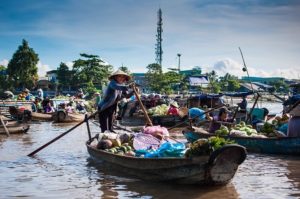
28 February 2017
In October 2015, ANZ published a new Energy Policy with a carbon emission threshold to “ensure we only support new coal fired power plants that use advanced technologies and higher quality coal to significantly reduce emissions to at least 0.8 tC02/MWh”. Two months later, it was announced that ANZ was one of two banks coordinating finance for the 1,200MW ‘Song Hau 1’ coal-fired power plant in Vietnam with an emissions intensity (0.85 tCO2/MWh) exceeding their own restriction. If this wasn’t surprising enough, details of the finance package emerged in November 2016 citing no change to this arrangement.
But the arrangement had changed. ANZ pulled out of the deal more than nine months earlier in February 2016 and more than four months after the publication of the bank’s Energy Policy. ANZ’s coal policy is clearly forcing them to back out of existing deals. While the policy is far from perfect and, in this case, the finance and build of the power station continues despite ANZ’s absence, it is a relief to at least see ANZ’s policy doing its job.
The development of Song Hau 1 is part of the Vietnamese Government’s ‘Power Development Plan VII’, which will see 45 GW of new coal plants built in Vietnam to 2030. The latest science shows that both Song Hau 1 and the policy driving its development are dangerously inconsistent with limiting global warming to below 2°C. The World Bank president remarked in mid-2016 that “if Vietnam goes forward with 40 GW of coal, if the entire region implements the coal-based plans right now, I think we are finished”.
Local impacts are also a concern. A spokesperson for the Vietnam-based Green Innovation and Development Centre (GreenID) said “Song Hau 1 power plant will withdraw and discharge water to Hau River which is blood vessel of people in Hau Giang province and play very important role in the whole Mekong Delta. We don’t want to see Phu Huu A to be the next commune to suffer from coal power.”
A year on from pulling out of the deal, ANZ now seems content to discuss these issues. In a 17 February ANZ BlueNotes article, Journalist & Asian Correspondent Luke Hunt discusses environmental concerns for the Mekong River:
“Totten said the Mekong River was also the source of much needed irrigation water and provided transportation for rice, cassava and other foodstuffs, including fish, even sturgeon breeding for the harvesting of caviar in the upper Mekong tributaries in Vietnam.”
In another BlueNotes article published five days later, Managing Editor Andrew Cornell wrote;
“Investment in coal-generating capacity then is quite problematic. Coal is carbon intensive and technological mitigations of that intensity, such as carbon capture and storage (CCS, to prevent carbon dioxide entering the atmosphere) and new ‘clean coal’ capacity (which produces reduced carbon dioxide emissions) are expensive and unproven.”
Is ANZ finally coming to grips with the environmental impacts of its financing decisions? Recent actions suggest a small step in the right direction, but Australia’s biggest lender to dirty fossil fuels still has a very long way to come.
